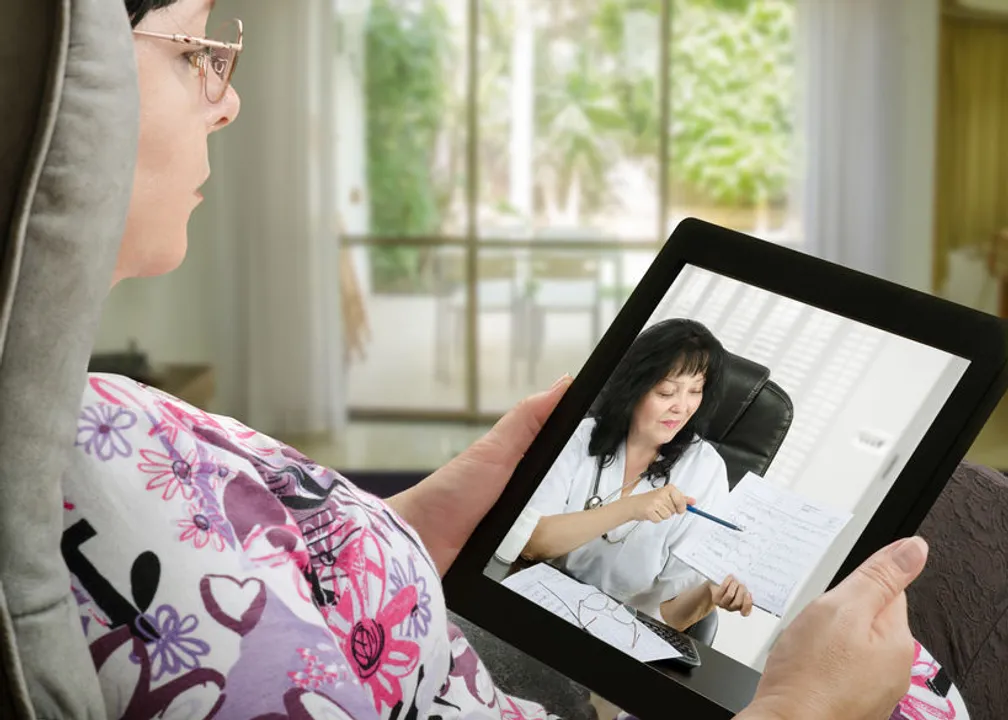Important Aspects of Rural Telehealth Program Development

verbaska/123RF.com
Coming to a Rural Town Near You
Telehealth is a critical tool for meeting rural healthcare workforce capacity and service delivery needs. The value is clear - rural telehealth increases patient access to care and closes the rural transportation gap through care delivered through smartphones and computers. Rural telehealth also provides access to specialty telemedicine visits or teleconsultation in rural hospitals and primary care practices. Much in the way strategies are needed for recruiting and retaining rural providers, rural telehealth comes with its own unique set of planning requirements, opportunities, and challenges. According to Doximity, the number of MDs who report skill in telemedicine doubled between 2015 and 2018. Those in rural and isolated communities are poised to benefit from this growing clinician fluency in telemedicine; rural hospitals and practices must be ready to capitalize on this provider skill set. Before that happens, there are layers of telehealth program development to unpack. Core considerations for rural telehealth program development include: state telemedicine rules and regulations, language and terminology, state parity laws, staffing and teleconsultation models, funding, broadband access, and benefits to rural communities.
Know Your State’s Telemedicine Profile
Know and understand your state’s telemedicine delivery regulations and requirements. Evisit, a for-profit market leader in remote care platforms, levels the playing field through robust telemedicine state-profiles. Their site includes everything from state-specific best practices in telemedicine, eligible healthcare providers, reimbursement/payor guidelines, parity laws, cross-state licensing, and even telemedicine billing codes (for all you billing and coding wonks out there!) Rich with content, Evisit’s site and services meet the needs of everyone from the novice to the telehealth expert seeking program development and delivery information.
Learn the Lingo
It’s important to get your terminology down. Debate continues about usage of the terms “telehealth” and “telemedicine.” Think of telehealth as a broad umbrella of all things related to clinical peer to peer education and treatment sharing, as well as service delivery through technology and electronic means. Telemedicine is a smaller bucket for care delivered directly from a provider to a patient through a technology platform, which may include an originating or hub site where a specialist is physically located to a distance or spoke site where a rural provider and patient are located. Store and forward or asynchronous telemedicine means that clinical information is shared from one clinician with a remote provider of care. Asynchronous telemedicine is a tool often used by radiology and dermatology specialists in collaboration with rural primary care providers. The American Telemedicine Association does a fabulous job simplifying telehealth program planning, telemedicine, and technology. Policy initiatives and reports like the 2019 State of the States Report: Coverage and Reimbursement may be accessed online or downloaded after creating a free user profile. ATA’s member Special Interest Groups (SIGs) host specialty-specific telehealth content and promote telehealth best practices
What’s Parity and Why Is It Important?
Telemedicine parity laws require private payors to reimburse for telemedicine visits at a rate commensurate with in-person care. The Center for Connected Health Policy (CCHP) has the most up to date information on telehealth policy changes around parity. According to CCHP, forty states currently have a law that governs private payer telehealth reimbursement policy, while thirty-four state Medicaid programs offer a transmission or facility fee when telehealth is used. Knowing your state’s parity laws can help you make the business case for telehealth program development or may point to a need for state advocacy around parity.
Finding Telehealth Funding
Rural telehealth program development starts with identifying sources of funding and costs. Depending on the model, startup costs may include distance clinical staff compensation and on-site clinical and other staff training, telehealth platform and related costs, equipment and maintenance, and telehealth technical support. For profits may seek funding from the Farm Bill, which provides 82 million dollars per year to help hospitals and other health care providers buy telehealth equipment and implement new programs. For Opioid Use Disorder (OUD) treatment, the Farm Bill sets aside almost one fourth of that 82 million for programs specific to telehealth clinician training, recovery programs, and preventive education. The Patient-Centered Outcomes Research Institute (PCORI) funds more than 30 million dollars in telehealth research and implementation grants for profit and nonprofit healthcare entities. For non-profit healthcare entities and organizations, the Health Resources and Services Administration (HRSA) Office of Advancement of Telehealth (OAT) is your go-to. HRSA’s OAT program offers many grant funded opportunities for rural non-profit hospitals and practices to implement initiatives that fit their needs.
Accessing Rural Telehealth and Broadband
The National Rural Health Association shows that 35% of rural Americans do not have home broadband internet connections. The FCC has pushed this issue, acknowledging rural telehealth’s role in improving access to healthcare in rural communities through strong broadband connections. The FCC has rolled out the Connected Care Pilot Program, which will provide an 85% discount on connectivity for broadband-enabled telehealth services for low income patients. Several groups are working at the grass-roots level around policy promotion of rural broadband access for all, the Pew Charitable Trust and the Center for Rural Strategies’ Rural Broadband Policy Group are two such proponents of this initiative.
Staffing for Telehealth
Telehealth staffing models continue to mystify many of us, but telehealth staffing protocols largely depend on the model that you implement. In non-face to face telehealth settings, Advanced Practice Providers can be used to screen simple primary care conditions and illnesses of low acuity and provide clinical recommendations and treatment. Direct to patient telemedicine visits require more clinical time and may require a physician to lead the care. The Northeast Telehealth Resource Center (Look for Telehealth A to Z) is chock-full of staffing related considerations and technology information. Before planning your telehealth staffing model review your state’s telehealth regulations with close attention to disciplines eligible/reimbursable for care delivery.
The Ultimate Rural Teleconsultation Tool- The ECHO Model
When it comes to teleconsultation, Project ECHO is a hands-down best practice model. Project ECHO was developed in 2003 by Dr. Sanjeev Arora, a liver disease specialist at the University of New Mexico Health Sciences Center in Albuquerque. Dr. Arora sought to expand his Hepatitis C treatment best practices beyond his patient panel to primary care physicians across New Mexico, where it could be amplified to their patients. Through the ECHO project, a specialist physician provides teleconsults or case studies in a virtual meeting made up of primary care physicians and other clinicians. The growth of project ECHO is phenomenal with more than 250 care partners across the world that have implemented programs in coordination with Dr. Arora’s group. A sampling of Project ECHO’s areas of work includes HIV prevention and care, Hepatitis C, Cancer, Chronic Pain, Behavioral Health and Addiction, First Responder, and Perinatal Health.
Telehealth is Ideal for Rural Primary Care
Specialty care continues to be big business for telehealth and rural primary care isn’t far behind. North County Health Services (NCHS), a federally qualified health center (FQHC) which includes rural pockets of San Diego county, partnered in 2016 with AristaMD’s eConsult platform to serve patients in their 13 primary care clinics. Through eConsults, specialty care needs were resolved for 71% of patients, reducing staff time and resources typically needed to make outside specialty referrals. NCHS is so committed to eConsults that claims not reimbursable through telehealth are paid through NCHS’ fundraising efforts. This model is replicable, especially within FQHCs or other non-profit primary care provider settings eligible for grant funding to support innovative federal telemedicine initiatives.
In 2009 the South Carolina Department of Mental Health (SC DMH), through funding from the Duke Endowment and State Medicaid, sought to support hospital Emergency Medicine (EM) Physicians’ care management of patients with complex behavioral health symptoms presenting to the Emergency Department (ED). EM physicians did not have specialty psychiatric expertise to guide clinical diagnoses and develop care plans for these patients, and beds were often filled with patients who were more appropriate for ED diversion. Existing shortages for community behavioral health care physicians caused care gaps for patients with these conditions, resulting in untreated mental illness that often led to ED visits. With the SC Telepsychiatry Program, patients across SC, many from rural communities, benefit from EM physician to Psychiatrist telehealth consultation. Recently the SC Telepsychiatry Program celebrated its one hundred thousandth patient teleconsult, and program expansion has benefitted patients of SC DMH’s community mental health centers as well. The ways in which telehealth can enhance and improve rural patient care access and increase clinician expertise are boundless. Gather your hospital or practice clinical team leaders, IT staff, and administration to explore the ways in which your rural hospital or practice may tap into this care access amplifier.
Related Posts
